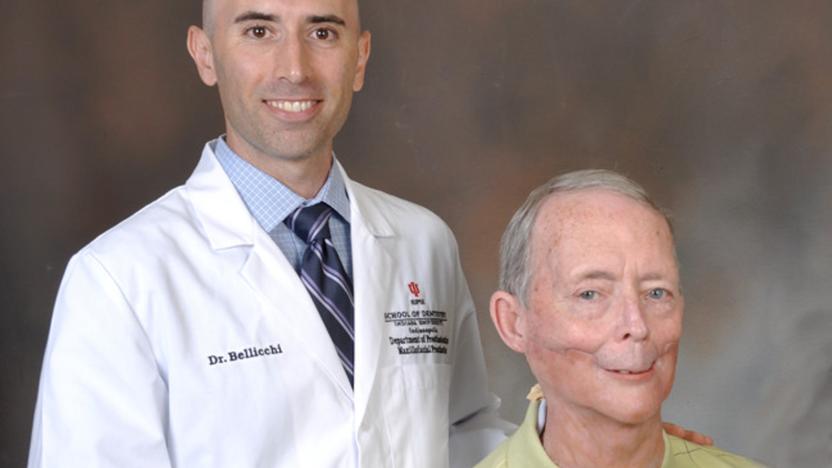jaw
Latest

Cancer patient receives a 3D-printed jaw
If you lose your lower jaw to cancer, you don't have many options for prosthetics. At that size, traditional clay is so heavy and unwieldy that you can only wear it for a few hours at a time. Indiana University's Dr. Travis Bellicchi and team have developed a much better alternative, though. He recently gave tongue cancer patient Shirley Anderson a 3D-printed jaw after losing his natural jaw to the side effects of radiation treatments. The digitally-modeled piece is not only much lighter, but far more natural-looking -- the creators could create more natural borders and account for fine details like skin pores. The result is good enough that Anderson could comfortably wear the prosthesis in public without drawing significant attention.

Alt-week 9.1.12: growing bones, repairing voices, and a pair of satellites
Alt-week peels back the covers on some of the more curious sci-tech stories from the last seven days. There's definitely more than a touch of a biological theme to proceedings this week. In fact, so much so that we thought we might well end up with enough ingredients to make our own cyborg. Or rather, a light-responding canine cyborg with a really cool voice. Yep, science and technology is working hard to make all of these things possible -- albeit independently. If science ever does do the right thing, and pool its resources on such a project, you can thanks us for the tip off. This is Alt-week.

83-year old woman gets replacement 3D printed titanium jaw, makes her the coolest member of the bridge club
3D printers are continuing to force their way into medical circles and the latest beneficiary is an 83-year old woman. She's the first to receive a titanium jaw crafted by those not-so dimensionally-challenged printers. The method was developed by the BIOMED Research Institute at Hasselt University in Belgium and creates the lower jaw replacement from layer-upon-layer of titanium dust. A computer-controlled laser then ensures that the correct molecules are fused together. The technique, the first to replace the entire jaw, takes mere hours to make the substitute choppers, while previous options would take several days. Although the final product weighs a bit more than its natural predecessor, but that didn't stop the patient returning close to "normal speaking and swallowing" the day after the operation. (Photo credit: ZDNET.de)


